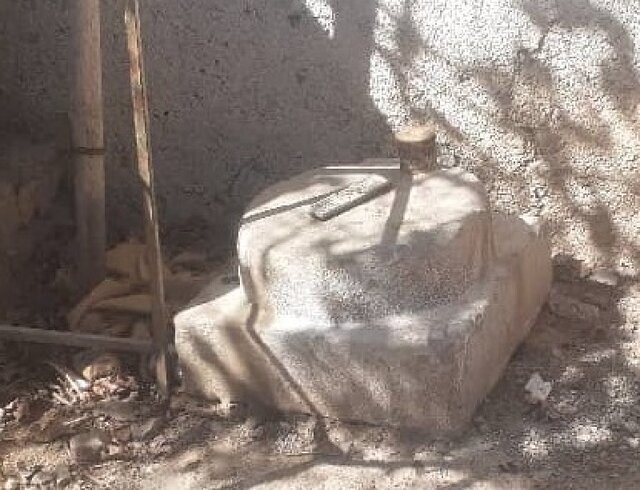Ancient column base discovered in garden southern Iran

TEHRAN – The pedestal and base of a historical stone column, believed to date from the Achaemenid era, has recently been a discovered in a garden, southern Iran.
The pedestal and base of a historical stone column, which altogether measures 50 by 50 with the height of 40 cm, has been discovered from a garden in Marvdasht county of Fars province, ISNA quoted a police official, Mohammadreza Bahmaninejad, as saying on Monday.
The object has been handed over to the UNESCO-registered Persepolis for further investigation, the official added.
Persepolis, also known as Takht-e Jamshid, whose magnificent ruins rest at the foot of Kuh-e Rahmat (Mountain of Mercy), was the ceremonial capital of the Achaemenid Empire. It is situated 60 kilometers northeast of the city of Shiraz in Fars Province.
The city was burnt by Alexander the Great in 330 BC apparently as revenge to the Persians because it seems the Persian King Xerxes had burnt the Greek City of Athens around 150 years earlier. The city’s immense terrace was begun about 518 BC by Darius the Great, the Achaemenid Empire’s king. On this terrace, successive kings erected a series of architecturally stunning palatial buildings, among them the massive Apadana palace and the Throne Hall (“Hundred-Column Hall”).
This 13-ha ensemble of majestic approaches, monumental stairways, throne rooms (Apadana), reception rooms, and dependencies is classified among the world’s greatest archaeological sites.
AFM/
